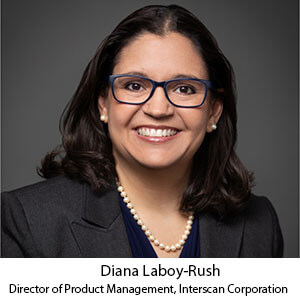IoT Unleashed: Powering Today’s Digital Revolution
 The Internet of Things (IoT) is a transformative force in today’s digital age, connecting billions of devices and enabling real-time data exchange. This interconnected web of devices, ranging from household appliances to industrial machinery, allows for enhanced automation, data-driven decisions, and improved user experiences. As IoT continues to evolve, it’s reshaping industries, driving innovation, and offering new opportunities for businesses to create value and meet consumer demands.
The Internet of Things (IoT) is a transformative force in today’s digital age, connecting billions of devices and enabling real-time data exchange. This interconnected web of devices, ranging from household appliances to industrial machinery, allows for enhanced automation, data-driven decisions, and improved user experiences. As IoT continues to evolve, it’s reshaping industries, driving innovation, and offering new opportunities for businesses to create value and meet consumer demands.
The Internet of Things (IoT) landscape is undergoing transformative shifts, with edge computing gaining traction, enabling real-time data processing closer to the source. The integration of AI and machine learning is enhancing predictive analytics capabilities. Enhanced security measures are addressing growing concerns, while 5G networks are accelerating data transfer speeds. Green IoT solutions are promoting sustainability, and the rise of smart cities showcases the expansive potential of interconnected devices.
The Growth of IoT Devices
The Internet of Things (IoT) continues to revolutionize the tech landscape, with billions of devices now interconnected globally. This surge in connectivity is transforming industries, from healthcare to agriculture, by enabling real-time data collection and analysis. As 5G networks expand, the number of connected devices is expected to surpass 75 billion by 2025. This rapid growth underscores the transformative power of IoT, reshaping how we live and work.
IoT technology is rapidly transforming our daily lives and industries. Everyday objects, from refrigerators to light bulbs, now possess smart capabilities, enhancing user experience and efficiency. Industrial machinery benefits from predictive maintenance, reducing downtime. Smart cities utilize IoT for traffic management and energy conservation. Wearables monitor health metrics, providing real-time feedback. As 5G networks expand, the seamless integration of IoT will become even more pronounced, driving innovation, and reshaping the technology landscape.
Enhanced Connectivity with 5G
The rapid evolution of 5G technology is reshaping the Internet of Things (IoT) landscape. With faster data transfer rates, reduced latency, and the ability to connect a vast number of devices simultaneously, 5G is setting the stage for a more interconnected world. This enhanced connectivity is enabling real-time data analysis, fostering innovation in sectors like healthcare, transportation, and smart cities. As 5G networks expand, the potential of IoT to transform industries and improve daily life becomes even more pronounced.
Faster and reliable connections for IoT devices enable real-time data processing, enhancing decision-making and operational efficiency. Enhanced connectivity ensures seamless integration across diverse devices, fostering innovation in sectors like healthcare, agriculture, and smart cities. With improved connections, IoT devices can better predict maintenance needs, reducing downtime. Additionally, enhanced connectivity supports the growth of edge computing, allowing data processing closer to the source, reducing latency, and ensuring timely responses in critical situations.
Edge Computing and IoT
Edge computing processes data closer to its source, like IoT devices, rather than relying on centralized cloud servers. This approach reduces latency, enhances data processing speed, and improves real-time decision-making. As IoT devices proliferate, edge computing becomes increasingly relevant, ensuring efficient data handling and optimizing device performance.
Edge computing plays a transformative role in the Internet of Things (IoT) landscape. By processing data closer to the source of generation, edge computing accelerates data processing speeds, ensuring real-time responses. This proximity reduces the need to send vast amounts of data to centralized data centers, thereby decreasing latency. As IoT devices proliferate, the demand for instant data processing grows, making the synergy between edge computing and IoT more pronounced for efficient operations.
Artificial Intelligence (AI) and Machine Learning (ML) Integration
The synergy between IoT, Artificial Intelligence (AI), and Machine Learning (ML) is reshaping industries and enhancing user experiences. IoT devices generate vast amounts of data, which AI and ML analyze to derive actionable insights. This combination allows for predictive maintenance, improved decision-making, and automation. For instance, smart homes use this synergy for energy optimization. In healthcare, it aids in patient monitoring and diagnosis. This convergence is also driving innovations in sectors like agriculture and manufacturing, leading to increased efficiency and productivity.
Here are 8 examples of AI-driven IoT applications and their impact:
- Smart Homes: AI-driven IoT devices in homes can adjust lighting, heating, and cooling systems based on the preferences of the residents. This leads to increased energy efficiency and enhanced comfort.
- Healthcare Monitoring: Wearable devices can monitor vital signs and detect anomalies in real-time. This allows for timely medical interventions, potentially saving lives.
- Agriculture: IoT devices equipped with AI can monitor soil moisture levels and predict when crops need watering. This results in optimized water usage and increased crop yields.
- Retail: Smart shelves equipped with sensors can detect when stock is low and automatically reorder products. This ensures that products are always available for customers, improving the shopping experience.
- Smart Cities: AI-driven IoT applications can manage traffic flow, optimize public transportation routes, and monitor air quality. This leads to reduced traffic congestion, efficient public transport, and improved air quality.
- Manufacturing: IoT sensors can predict when machinery needs maintenance, reducing downtime and increasing production efficiency.
- Energy Management: AI-driven IoT applications can predict energy consumption patterns and adjust energy distribution accordingly. This leads to optimized energy usage and reduced costs.
- Supply Chain and Logistics: IoT devices can track the location and condition of goods in real-time. This ensures timely delivery and reduces the risk of goods being damaged during transit.
IoT in Healthcare
The Internet of Things (IoT) has reshaped healthcare by introducing remote monitoring and smart wearables. These advancements allow for continuous patient tracking, reducing hospital visits and costs. Wearable devices, like smartwatches, can monitor vital signs, ensuring timely medical intervention. Additionally, IoT devices collect vast amounts of data, enabling personalized treatment plans and improved patient outcomes. This technology also supports healthcare professionals by providing real-time information, leading to better decision-making and enhanced patient care.
Integrating IoT in medical devices offers numerous advantages, including enhanced patient care through real-time monitoring. This continuous oversight not only leads to personalized treatments but also results in better patient outcomes. Additionally, the healthcare sector can realize significant cost savings as continuous monitoring can reduce the duration of hospital stays and the frequency of readmissions. Wearables and other IoT devices also play a pivotal role in collecting vast amounts of health data, which can be invaluable for research and devising new treatments.
However, this integration is not without its challenges. The proliferation of connected devices amplifies the risk of data breaches, raising serious security concerns. Ensuring seamless communication between different devices can pose integration issues. Furthermore, the sheer volume of data generated can be overwhelming, necessitating advanced systems and expertise for effective management and analysis.
Sustainability and Green IoT
The Internet of Things (IoT) plays a transformative role in promoting sustainability and environmental conservation. By connecting devices and systems, IoT enables efficient energy use, reduces waste, and optimizes resource consumption. For instance, smart grids adjust energy distribution based on demand, reducing energy waste. IoT also aids in monitoring air and water quality, ensuring timely interventions. Smart agriculture, another application, optimizes water and fertilizer use, leading to sustainable farming practices. Through these applications, IoT contributes to a greener planet.
Here are 5 examples of IoT applications that contribute to a greener planet:
1. Smart Grids
These grids utilize IoT devices to optimize the delivery of electricity, reducing waste and improving energy efficiency. They can adjust to changes in energy demand in real-time, ensuring that electricity is distributed efficiently.
2. Precision Agriculture
IoT devices, such as sensors, are used in agriculture to monitor soil moisture levels, weather conditions, and crop health. This allows farmers to apply water, fertilizers, and pesticides only when needed, reducing waste and environmental impact.
3. Waste Management
Smart waste bins equipped with sensors can monitor the level of waste and notify collection trucks when they are full. This optimizes collection routes, reduces fuel consumption, and minimizes the environmental impact of waste collection.
4. Smart Water Management
IoT sensors can detect leaks in real-time, reducing water waste. Additionally, smart irrigation systems can adjust watering schedules based on weather forecasts and soil conditions, ensuring that plants receive the right amount of water.
5. Energy-Efficient Buildings
Buildings equipped with IoT devices can monitor and adjust lighting, heating, and cooling systems to optimize energy use. This not only reduces energy consumption but also decreases the carbon footprint of the building.
Enhanced Security Concerns
The challenges of ensuring security in an interconnected world are numerous. With the rise of IoT devices, there’s an increased risk of cyberattacks. These devices often lack proper security measures, making them easy targets. Many IoT devices collect vast amounts of data, which, if compromised, can lead to privacy breaches. Additionally, outdated software and firmware can expose vulnerabilities. Manufacturers sometimes prioritize functionality over security, exacerbating the issue. To combat these challenges, it’s important to adopt best practices, like regular updates and strong authentication methods.
Below are measures and best practices to safeguard IoT devices and networks include:
- Regular Updates: Always keep device firmware and software updated to patch vulnerabilities.
- Strong Passwords: Use unique and complex passwords for each device and change them periodically.
- Network Segmentation: Separate IoT devices from critical business systems to prevent potential breaches from spreading.
- Device Management: Monitor and manage all connected devices to detect and respond to suspicious activities.
- Encryption: Ensure data transmitted between devices and networks is encrypted.
- Vendor Assessment: Before purchasing, evaluate the security features of IoT devices.
- Disable Unnecessary Features: Turn off unused functionalities to reduce potential attack surfaces.
By implementing these practices, organizations can enhance the security of their IoT ecosystem.
The Future of IoT
IoT continues to evolve with advancements like AI integration, edge computing, and 5G connectivity. Enhanced security measures are being prioritized due to rising cyber threats. Industries, especially healthcare and agriculture, are leveraging IoT for improved efficiency. Smart cities are focusing on sustainability, with IoT aiding waste management and energy conservation. Personalized consumer experiences are being shaped by IoT in retail. Lastly, the automotive sector is gearing towards connected vehicles, enhancing safety and navigation.
The Internet of Things (IoT) continues to drive transformative changes across various industries. With advancements like edge computing, AI integration, and enhanced security, IoT devices are becoming more efficient and versatile. These innovations are enabling smarter cities, improved healthcare monitoring, and energy-efficient solutions. As 5G networks expand, the connectivity and speed of IoT devices will further enhance, leading to more real-time data processing and decision-making. This progress promises a better quality of life and streamlined operations across sectors.
IoT continues to reshape industries, driving innovations like smart cities, healthcare advancements, and energy efficiency. With 5G, edge computing, and AI integration, IoT devices offer faster data processing and real-time analytics. Enhanced security measures are addressing concerns, while sustainability efforts benefit from IoT-enabled solutions. As industries adopt IoT, they experience improved operations, customer experiences, and new business models, underscoring IoT’s transformative impact.
Dive into the IoT wave now! With trends like AI integration, enhanced security, edge computing, and 5G connectivity shaping the IoT landscape, there’s no better time to adapt. Whether it’s smart homes, healthcare, or industries, IoT is transforming how we live and work. Don’t miss out on harnessing its power for growth and innovation. Act now and be part of the future!

















